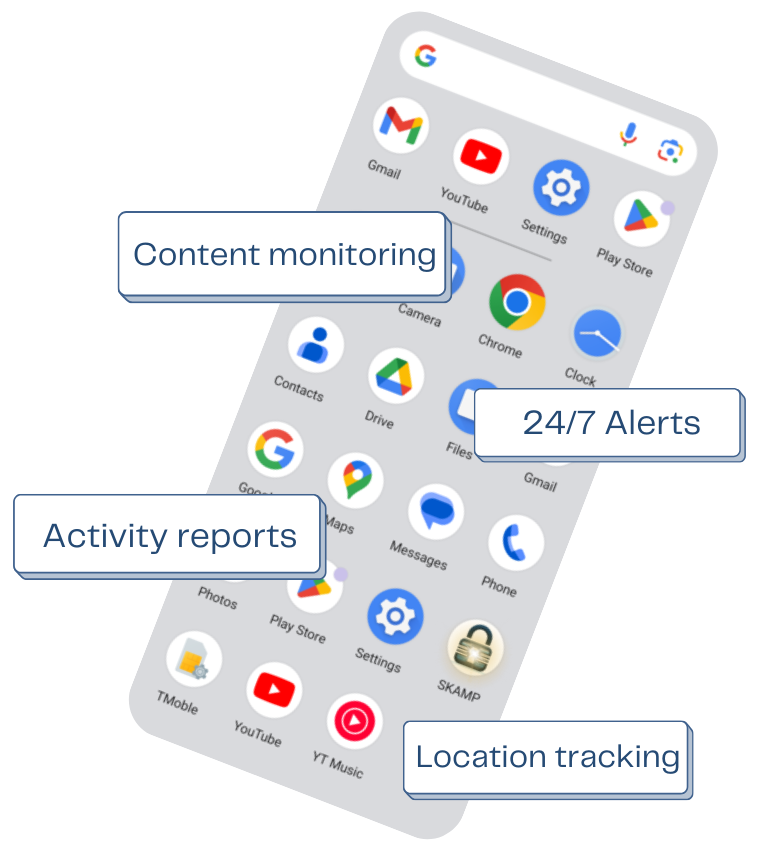
SKAMP @ Home
The SKAMP system harnesses the latest machine learning technology to process textual data in real-time to detect harmful events and raise alerts. In 2026, we will produce a product that gives parents the comfort of knowing their child is protected from violence, bullying, grooming, self-harm, substance abuse, mass shootings and other harmful events that threaten a child's physical, emotional, or mental well being.
SKAMP will review multiple communications streams reliably and alert parents in real-time when a potential problem is detected. With speedy delivery of an alert and a reliable algorithm for detecting harmful content, SKAMP will monitor text messages across all commonly used apps, including social media, in real time on Android and iOS devices.
SKAMP provides an alternative for parents who want to protect their children without spying on them or limiting their online access. Our parents do not have the time or inclination to review all cell phone activity. They want a solution to notify them if their child is in danger without breaching the child's right to privacy.
Key Facts
- Children spend more and more time online. Common Sense Media reports: "tweens average more than 4.5 hours of screen media and teens more than 6.5 hours of screen media a day. SKAMP will monitor your children 24-7.
- Security companies are not immune to data leaks as they continue to rise. For example, Norton LifeLock revealed that thousands of customers had their accounts compromised (Norton Lifelock). SKAMP will run entirely on the child's device, protecting their privacy and data.
- Cyberbullying is widespread and causes enormous damage to children and youth. 14.2% of girls and 14.8% of boys ages 9–12 have been the target of cyberbullying attacks.
- Nationwide there is a five-fold increase in suicide attempts among pre-teens.
- The CDC reports that 15% of high school students reported using illicit or injection drugs, such as cocaine, inhalants, heroin, methamphetamines, hallucinogens, or ecstasy, and 14% reported misuse of prescription opioids.
- Other potentially harmful situations that can be detected by SKAMP include eating disorders, alcohol and marijuana use/abuse, dating violence, school violence, and mental health concerns.
- SKAMP will detect other harmful situations as we become aware of their impact on youth. Our technical solution includes ongoing studies to continually analyze communication among teens and tweens and adapt when new trends and slang emerge.